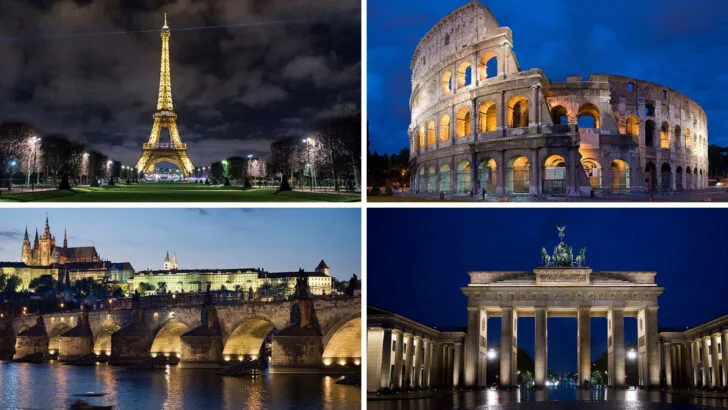Europe might be small on a map — but it’s overflowing with landmarks the world can’t stop photographing. From Paris’s iron masterpiece to Iceland’s glowing lagoons, every country has that one spot that steals the spotlight and fills a million camera rolls.
Some are centuries old, built by kings and dreamers. Others are natural wonders carved by ice, wind, and time. Each one tells a story — of pride, beauty, and the way people fall in love with a place through a single snapshot.
Eiffel Tower, France
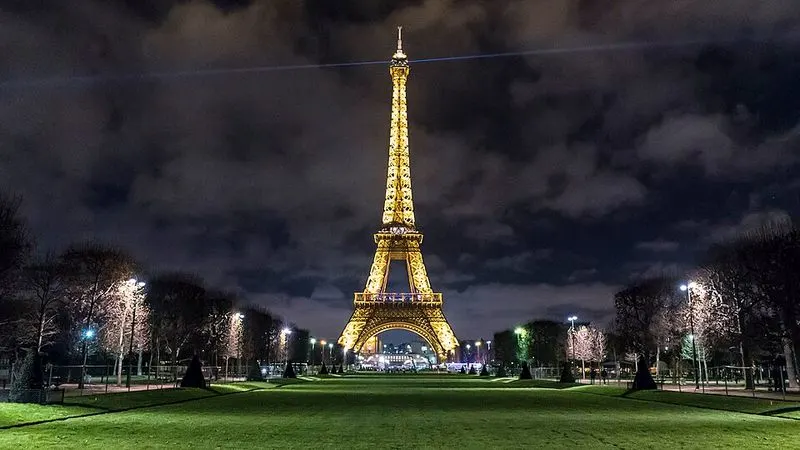
The Eiffel Tower stands as a symbol of romance and architectural brilliance. Erected in 1889, this iron lattice tower dominates the Paris skyline.
Standing at 324 meters, it offers spectacular views of the city. Visitors often capture its beauty during sunset when it glows with a golden hue.
This iconic structure, designed by Gustave Eiffel, attracts millions yearly, becoming a universal emblem of France’s cultural heritage.
Colosseum, Italy
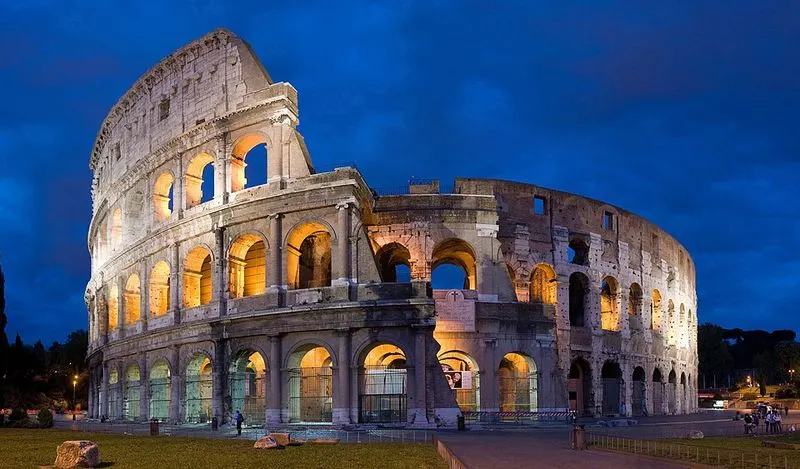
The Colosseum, an ancient amphitheater in Rome, embodies the grandeur of the Roman Empire. Built around AD 70-80, it hosted gladiatorial games.
Its massive stone structure, with tiered seating, allowed up to 80,000 spectators to enjoy dramatic spectacles. Photographers capture its splendor from various angles, particularly at sunrise.
A testament to architectural innovation, the Colosseum remains a timeless attraction, drawing history enthusiasts worldwide.
Big Ben, United Kingdom
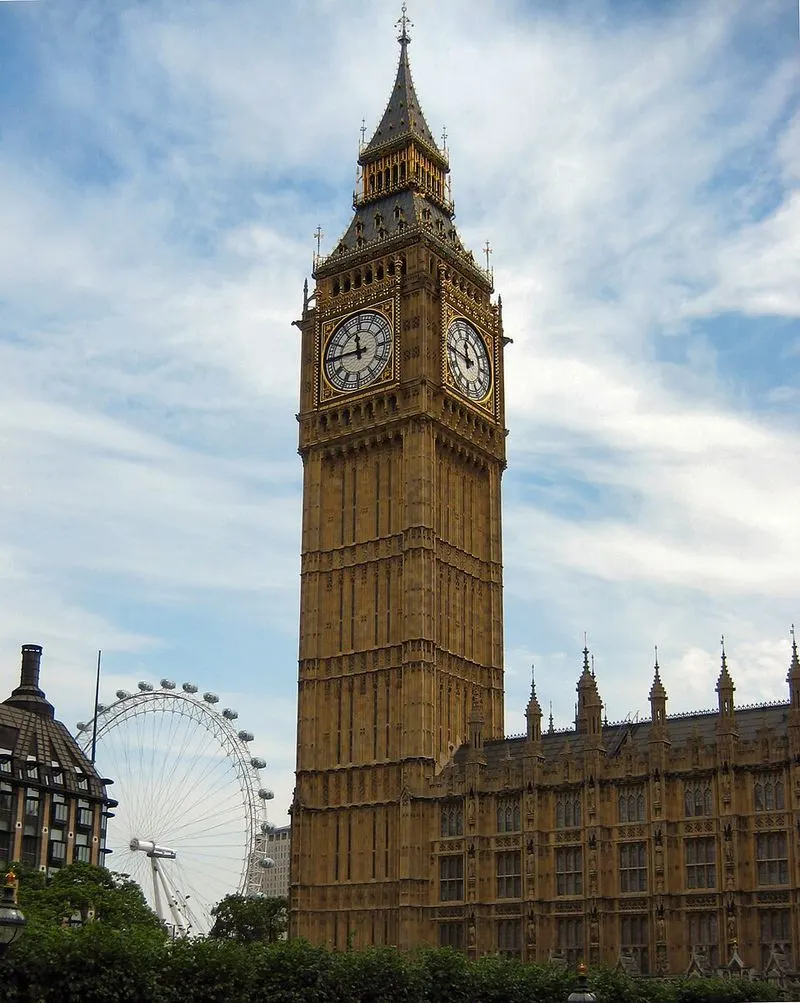
Big Ben, the iconic clock tower of London’s Houses of Parliament, represents British heritage. Officially called the Elizabeth Tower, it was completed in 1859.
Its clock is renowned for accuracy, chiming every hour with a distinct sound. As the UK’s cultural symbol, it appears in countless films and photos.
Whether enveloped in fog or bathed in sunlight, Big Ben’s Gothic design is a perennial favorite among photographers.
Brandenburg Gate, Germany
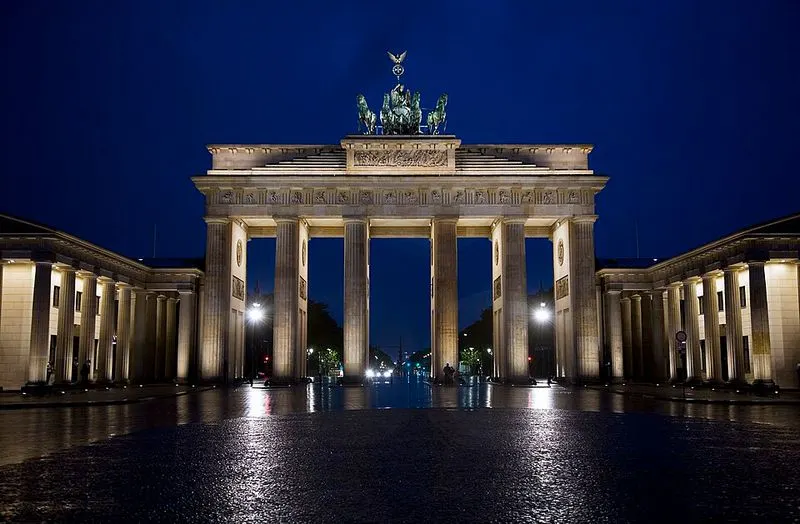
Once a symbol of division, Brandenburg Gate now stands for unity. Erected in the late 18th century, it marks the end of Unter den Linden in Berlin.
This neoclassical monument, topped with the Quadriga sculpture, saw pivotal historical events, including the fall of the Berlin Wall.
Today, it draws tourists who marvel at its architectural beauty and historical significance, making it a must-see landmark.
Sagrada Familia, Spain
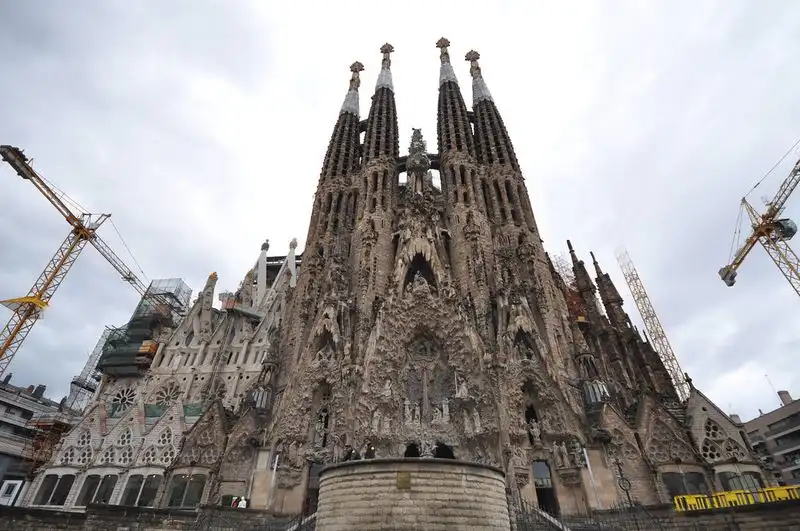
Antoni Gaudí’s Sagrada Familia is a masterpiece of modernist architecture. Begun in 1882, this basilica remains under construction, blending Gothic and Art Nouveau styles.
Its towers and intricate façades tell biblical stories through sculptures and stained glass. The interplay of light inside creates a spiritual ambiance.
The Sagrada Familia stands as a testament to Gaudí’s vision, drawing visitors with its artistic and religious significance.
Acropolis, Greece
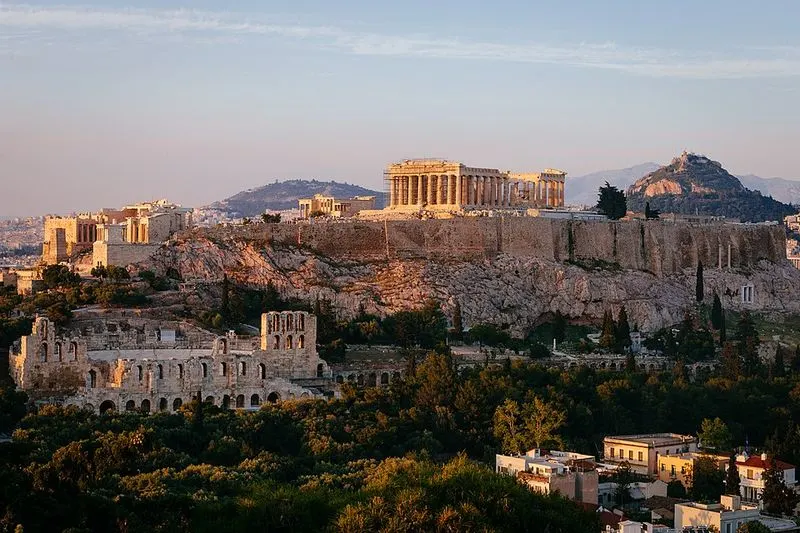
Perched above Athens, the Acropolis is a symbol of ancient Greek civilization. The Parthenon, its most famous temple, reflects classical architectural excellence.
Built in the 5th century BC, it honors the goddess Athena, showcasing Doric columns and sculptural friezes. The site’s historical and cultural significance is immense.
Visitors flock to witness the Acropolis’s enduring beauty, capturing timeless images of this majestic ruin.
Charles Bridge, Czech Republic
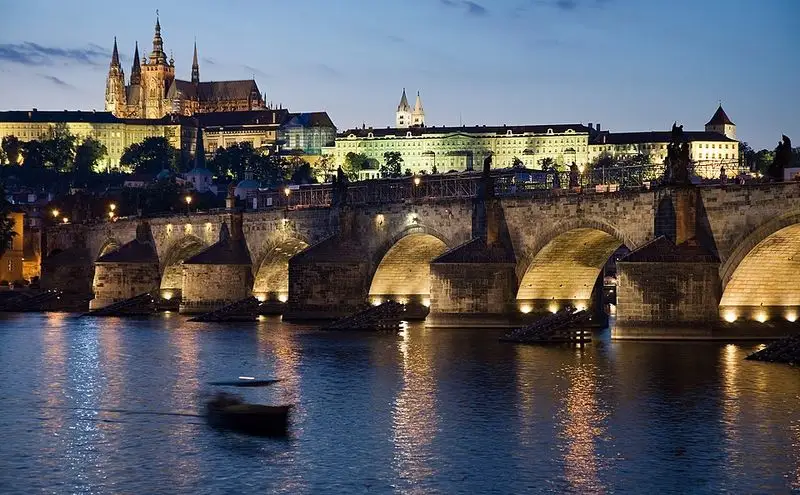
Spanning the Vltava River, Charles Bridge is a medieval stone arch bridge in Prague. Known for its impressive Gothic towers and Baroque statues, it dates back to the 14th century.
At dawn, the bridge exudes a magical aura, with artists and musicians adding to its charm. Stunning views of the cityscape make it a favorite for photographers.
Charles Bridge remains a key historical landmark, embodying Prague’s romantic and artistic spirit.
St. Basil’s Cathedral, Russia
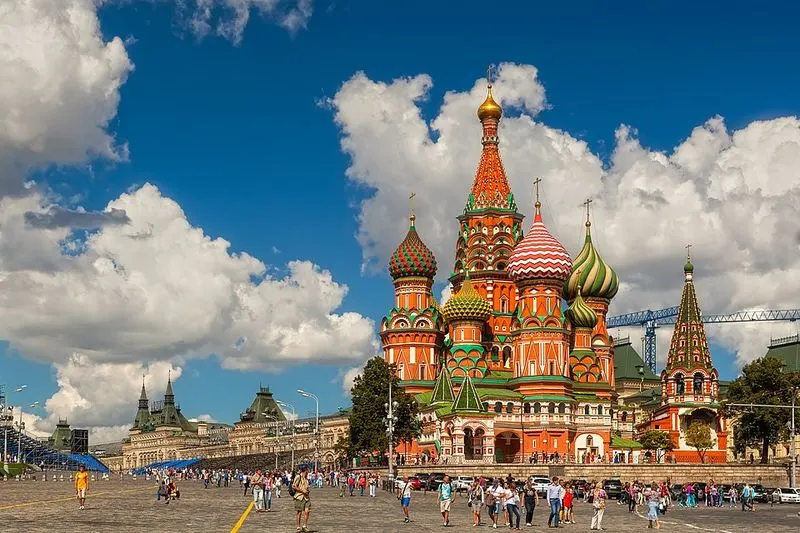
St. Basil’s Cathedral, with its flamboyant onion domes, is a vivid landmark in Moscow’s Red Square. Built in the 16th century, it commemorates Ivan the Terrible’s victories.
Its kaleidoscopic architecture, reminiscent of a fairy-tale castle, captivates with vibrant colors and intricate patterns. The interior is equally mesmerizing with frescoes and icons.
This unique architectural gem continues to draw admiration and countless photographs from tourists worldwide.
Parliament Building, Hungary
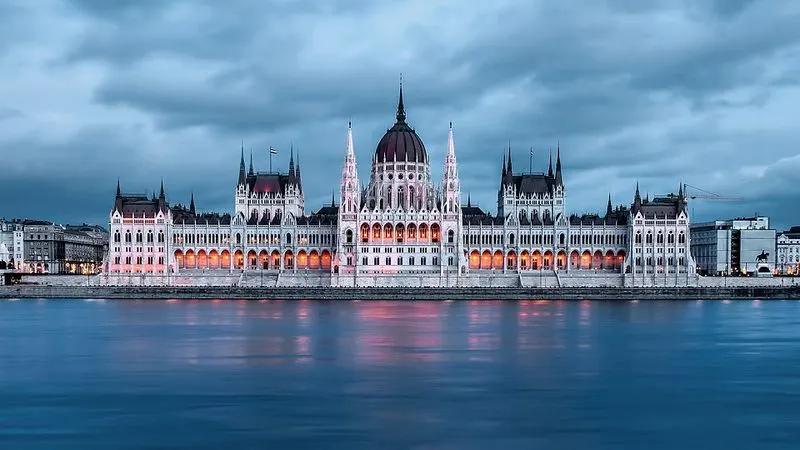
The Hungarian Parliament Building, an architectural marvel on the Danube’s banks, is a symbol of Budapest. Completed in 1904, it showcases Gothic Revival style.
With its soaring spires and intricate stonework, it captivates visitors by day and night. Illuminated, it casts a shimmering reflection on the river.
Its grandeur and historical significance as Hungary’s legislative seat make it a beloved subject for photographers.
Edinburgh Castle, Scotland
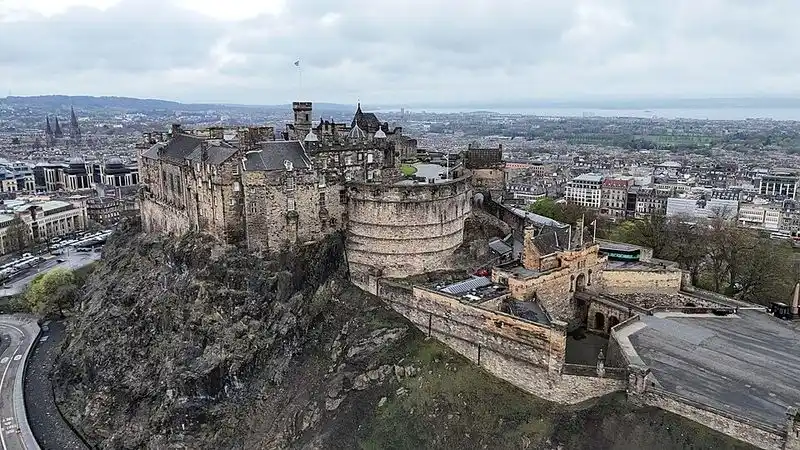
Edinburgh Castle, a historic fortress atop Castle Rock, dominates Scotland’s capital skyline. Its origins date back to the Iron Age, rich with tales of battles and royalty.
The castle’s stone walls and turrets offer panoramic views of the city and beyond. Illuminated at night, it exudes a mystical allure.
As a cultural icon and visitor favorite, Edinburgh Castle remains a timeless subject for photographers and historians alike.
Matterhorn, Switzerland
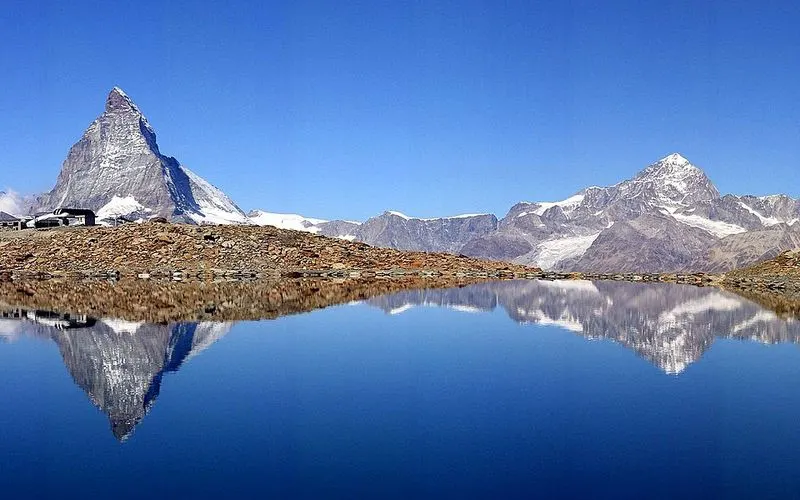
The Matterhorn, one of the Alps’ most iconic peaks, towers at 4,478 meters. Its striking pyramid shape is recognizable worldwide, symbolizing Swiss natural beauty.
Covered in snow year-round, it attracts mountaineers and photographers who relish its dramatic vistas. The surrounding alpine scenery adds to its allure.
Capturing the Matterhorn at sunrise or sunset, with its shadowed slopes, provides a breathtaking visual experience.
Old Town, Tallinn, Estonia
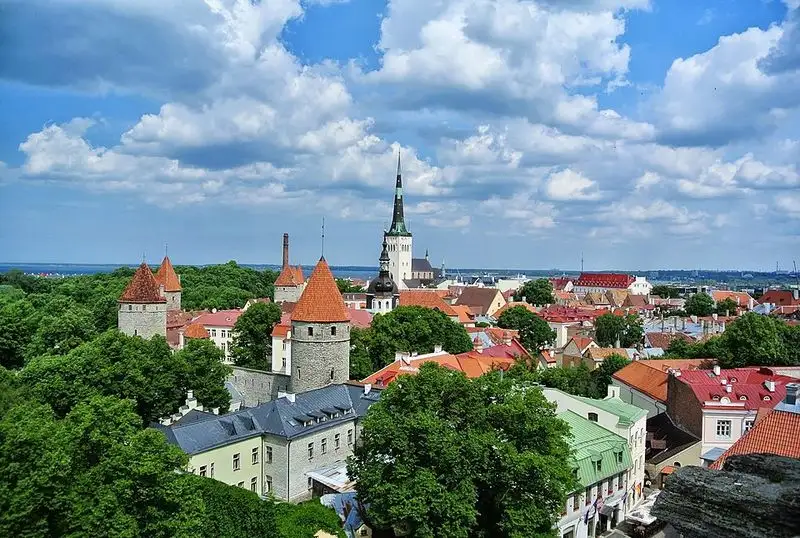
Tallinn’s Old Town, a UNESCO World Heritage site, is a preserved medieval gem. Its cobblestone streets, Gothic spires, and ancient city walls transport visitors back in time.
Market stalls bustle with life, offering crafts and local delicacies. The town’s vibrant festivals often feature medieval costumes, adding to its historical atmosphere.
Photographers delight in capturing the town’s timeless charm and lively scenes, making it a favorite in Estonia.
Ljubljana Castle, Slovenia
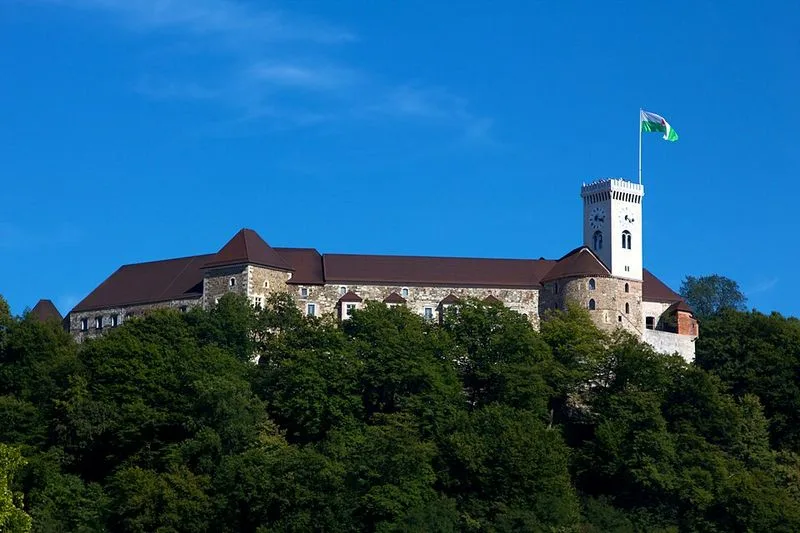
Ljubljana Castle, a medieval fortress atop Castle Hill, offers panoramic views of Slovenia’s capital. Its origins date back to the 11th century, steeped in history and legend.
The castle’s clock tower and restored interiors provide insight into Slovenia’s past. Surrounded by greenery, it’s a peaceful retreat from city life.
Photographers capture its commanding presence and the scenic vistas it offers, making it a must-visit landmark in Ljubljana.
Dubrovnik Walls, Croatia
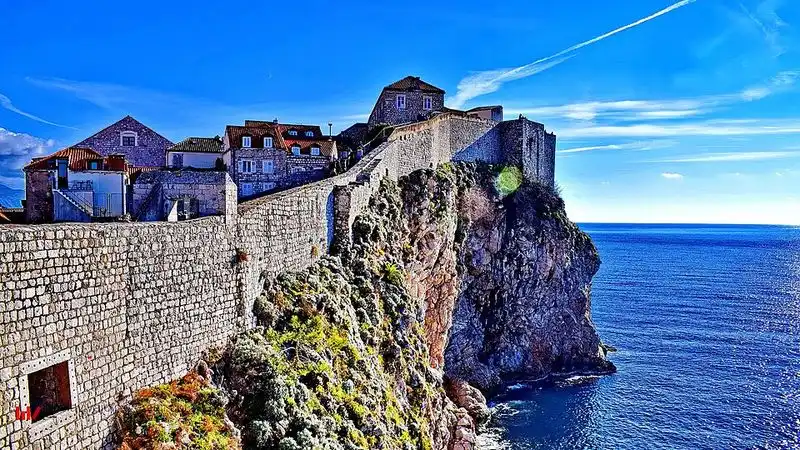
Dubrovnik’s city walls, a testament to medieval fortification, encircle the historic Old Town. Built from the 13th to 16th centuries, they offer stunning views of the Adriatic.
Walking along the walls, visitors encounter turrets and towers, each with a storied past. Terracotta rooftops and azure seas create a picturesque backdrop.
These walls, captured in countless photographs, symbolize Dubrovnik’s resilience and timeless beauty.
Stortorget, Sweden
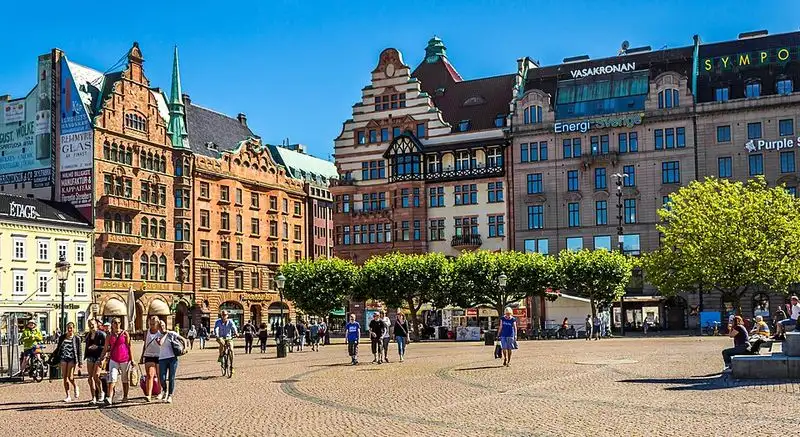
Stortorget, the oldest square in Stockholm’s Gamla Stan, is a vibrant hub of history and culture. Its colorful 17th-century buildings exude a cheerful charm.
The central fountain and cobbled streets invite leisurely exploration. Outdoor cafés buzz with activity, offering a taste of Swedish hospitality.
A favorite subject for photographers, Stortorget’s lively atmosphere and architectural beauty make it an essential stop in Sweden.
St. Stephen’s Basilica, Hungary
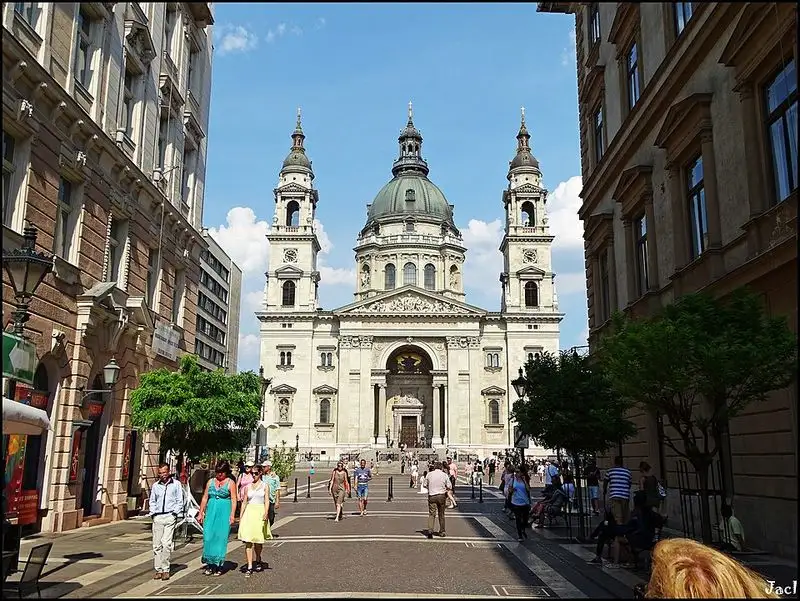
St. Stephen’s Basilica, a neoclassical masterpiece in Budapest, honors Hungary’s first king. Its construction began in 1851, blending grandeur with sacred tradition.
The basilica’s vast dome and ornate interiors are awe-inspiring, offering panoramic city views from its towers. Weddings often embellish its steps, adding to its charm.
A spiritual and cultural landmark, it remains a favorite for photographers and visitors celebrating Hungarian heritage.
Bran Castle, Romania
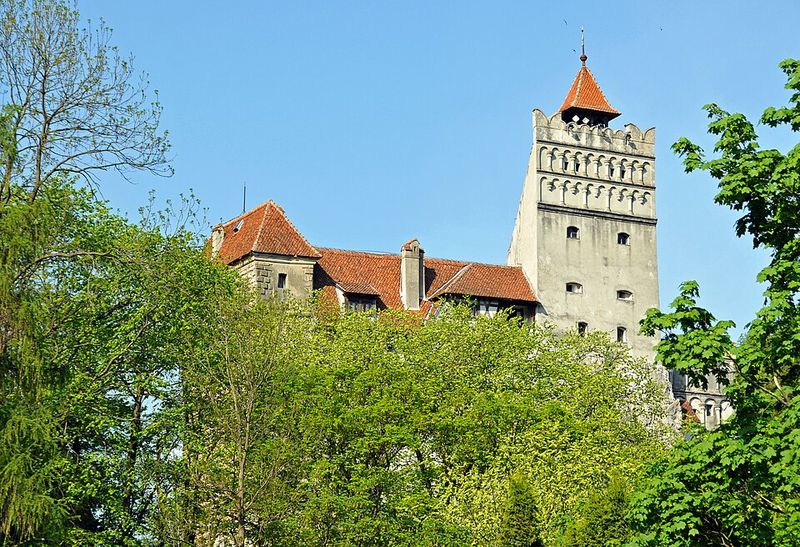
Bran Castle, often linked to Dracula’s legend, is a medieval fortress in Romania. Nestled in the Carpathians, it dates back to the 14th century.
Its turrets and battlements exude a Gothic allure, capturing imaginations worldwide. The castle’s misty surroundings enhance its mysterious reputation.
Photographers and travelers are drawn to Bran Castle for its eerie beauty and storied past, making it an iconic Romanian landmark.
St. Michael’s Gate, Slovakia
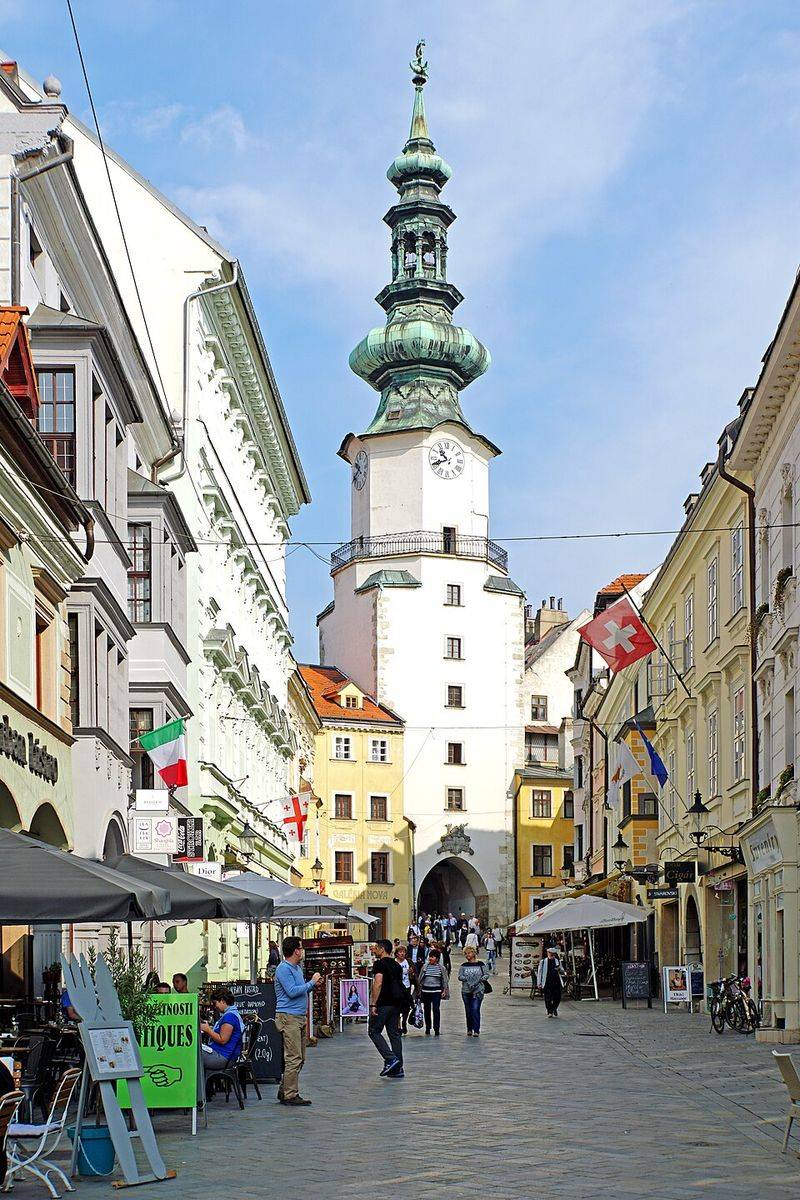
St. Michael’s Gate, a Gothic tower in Bratislava, serves as a gateway to the city’s past. Built in the 14th century, it’s a remnant of medieval fortifications.
Its narrow passage and intricately decorated tower offer a glimpse into Bratislava’s rich history. Street musicians add life to the historic ambiance.
This iconic landmark, admired by photographers, stands as a testament to Slovakia’s architectural heritage and lively culture.
Meteora Monasteries, Greece
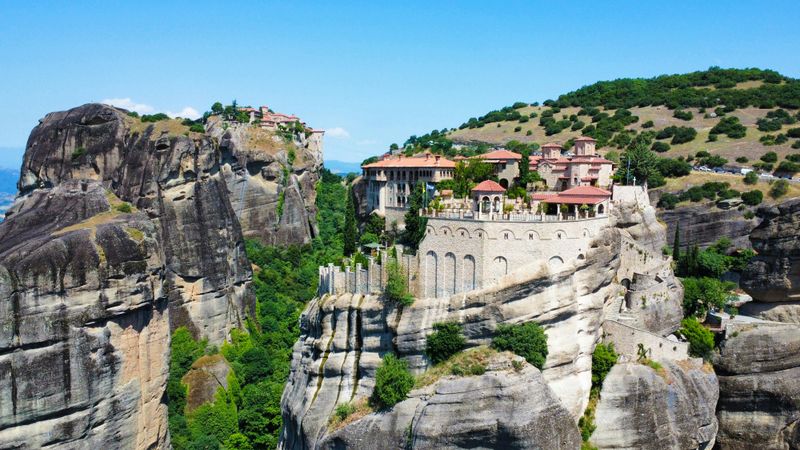
The Meteora Monasteries, perched atop towering rock formations, are a spiritual marvel in Greece. Dating back to the 14th century, they defy gravity and time.
The monasteries offer a serene retreat with panoramic views of the Thessaly Valley. The surrounding landscape, a mix of rugged cliffs and vibrant foliage, captivates photographers.
These monasteries, a blend of natural wonder and human ingenuity, stand as a testament to Greece’s spiritual and artistic legacy.
Blue Lagoon, Iceland
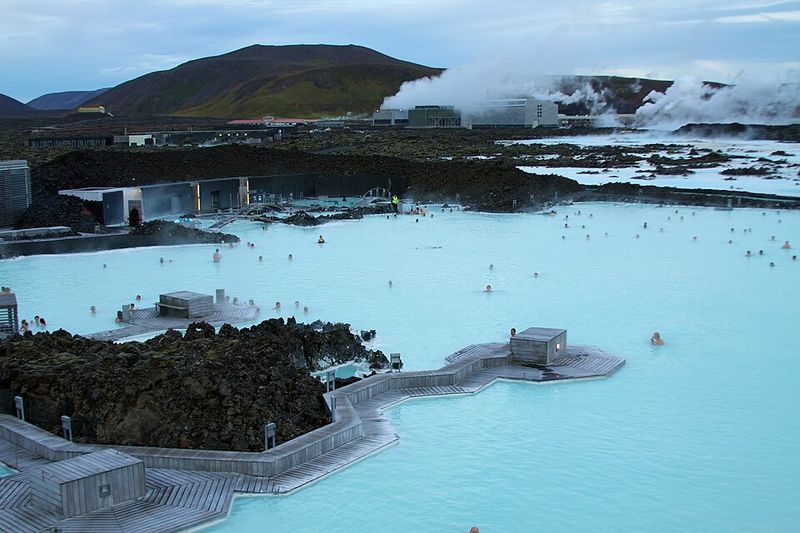
The Blue Lagoon in Iceland is a surreal geothermal spa known for its milky-blue waters. Formed by volcanic activity, it offers a unique bathing experience.
Surrounded by black lava fields, the lagoon’s mineral-rich waters are believed to have healing properties. Visitors enjoy its warmth against the stark Icelandic landscape.
This natural wonder, a favorite for photographers, highlights Iceland’s geothermal beauty and attracts wellness seekers worldwide.
Egeskov Castle, Denmark
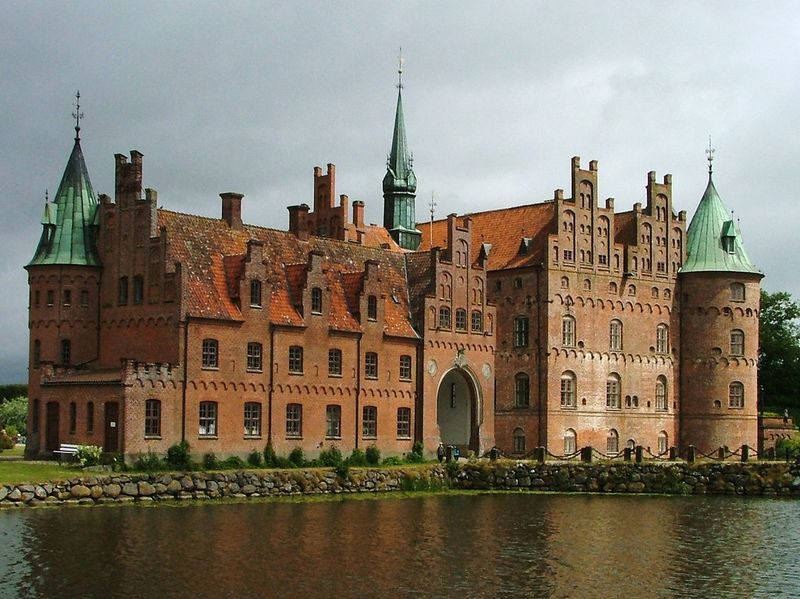
Egeskov Castle, set amidst lush gardens, is a Renaissance gem in Denmark. Built in 1554, it is one of Europe’s best-preserved moated castles.
The castle’s reflection in the surrounding lake creates a picturesque scene, particularly captivating in spring. Its gardens, filled with topiary and flowers, add to the charm.
Photographers are drawn to Egeskov’s romantic setting and historical allure, making it a favorite Danish landmark.
Sibiu Old Town, Romania
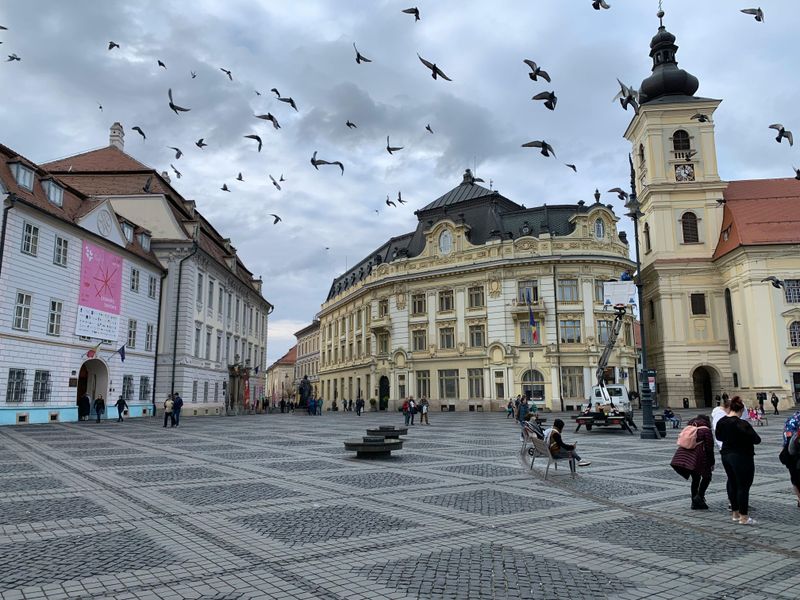
Sibiu’s Old Town, a cultural jewel in Romania, is known for its well-preserved Baroque architecture. Its cobblestone streets and vibrant squares invite exploration.
The town’s lively markets, filled with local crafts and produce, add to its charm. Visitors relish the blend of history and modernity.
Photographers capture the beauty and vibrancy of Sibiu, making it a favorite location for cultural and historical exploration.
Cathedral of Saint Sava, Serbia
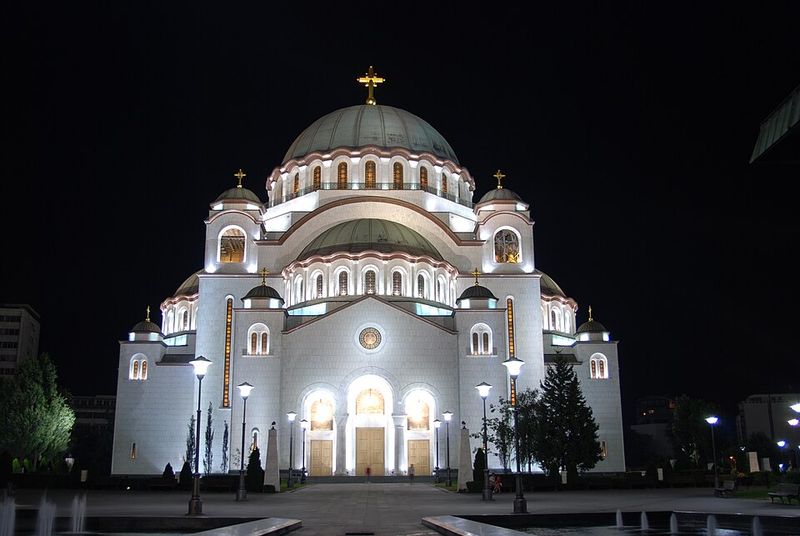
The Cathedral of Saint Sava in Belgrade is a monumental expression of Serbian Orthodox faith. Built in the Byzantine style, it is one of the largest Orthodox churches in the world.
Its grand dome and elaborate iconography are stunning, especially when lit at night. The cathedral’s spiritual and cultural significance resonates deeply.
Photographers and pilgrims alike are drawn to its majestic presence, making it a landmark of serenity and faith in Serbia.
Trakai Island Castle, Lithuania
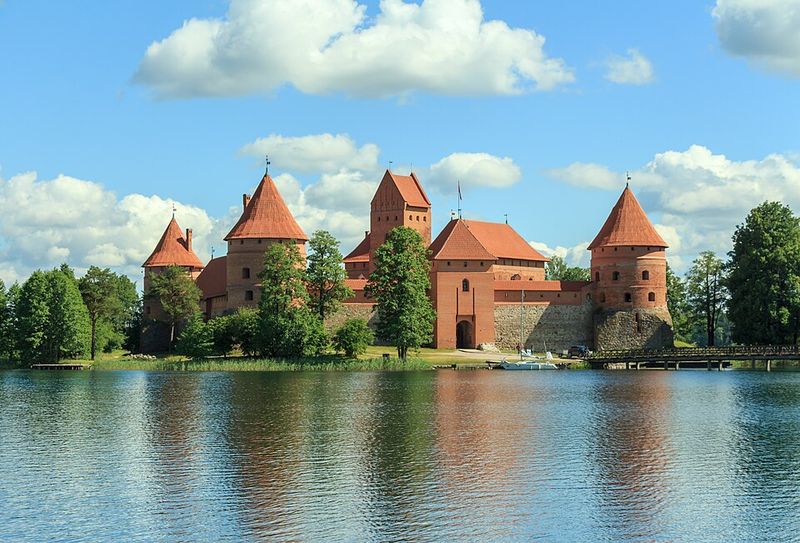
Trakai Island Castle, nestled on an island in Lake Galvė, is a medieval fortress in Lithuania. Its red brick towers and turrets reflect in the serene waters.
A wooden bridge links the castle to the mainland, offering picturesque views and a sense of history. Twilight provides a magical backdrop for photography.
This enchanting castle, steeped in history, is a beloved subject for photographers and a symbol of Lithuania’s medieval past.
Palace of Culture and Science, Poland
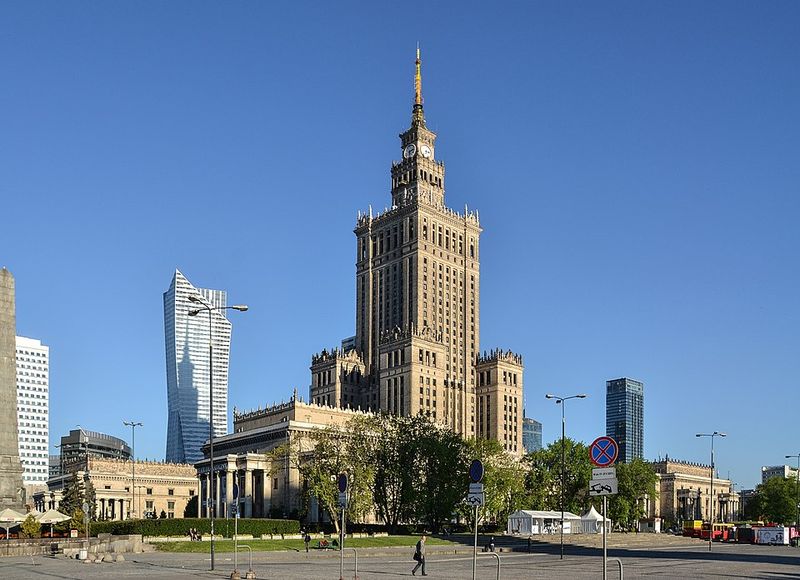
The Palace of Culture and Science, a Soviet-era skyscraper, is a prominent feature of Warsaw’s skyline. Completed in 1955, it embodies socialist realism.
Its imposing structure houses theaters, museums, and more. The building’s height offers panoramic city views, making it a popular tourist attraction.
Photographers capture the contrast between its historic architecture and the vibrant life of modern Warsaw, creating a compelling narrative.
St. Peter’s Basilica, Vatican City
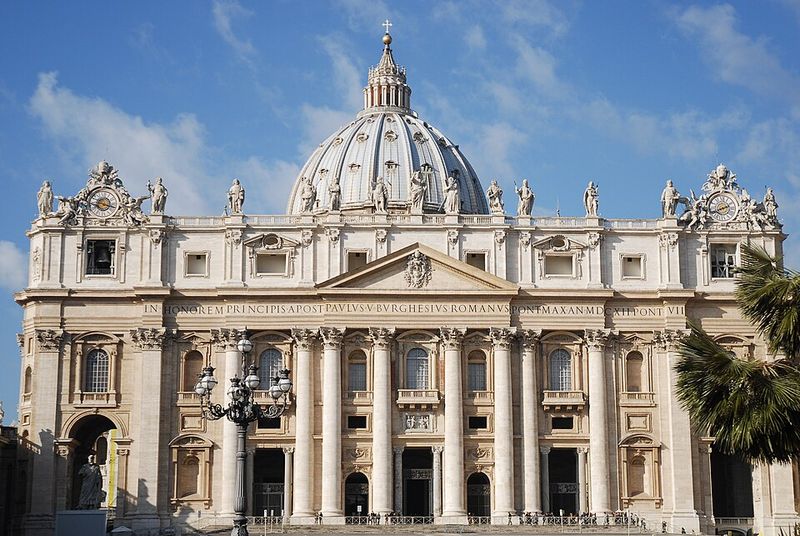
St. Peter’s Basilica, a Renaissance masterpiece, is the heart of Vatican City. Its grand dome, designed by Michelangelo, is a marvel of engineering and art.
The basilica’s vast interior and ornate details are awe-inspiring. St. Peter’s Square, bustling with pilgrims, adds to the spiritual atmosphere.
This iconic landmark, a symbol of Catholicism, draws visitors from all over the globe, making it a photographic and spiritual highlight.
St. Alexander Nevsky Cathedral, Bulgaria
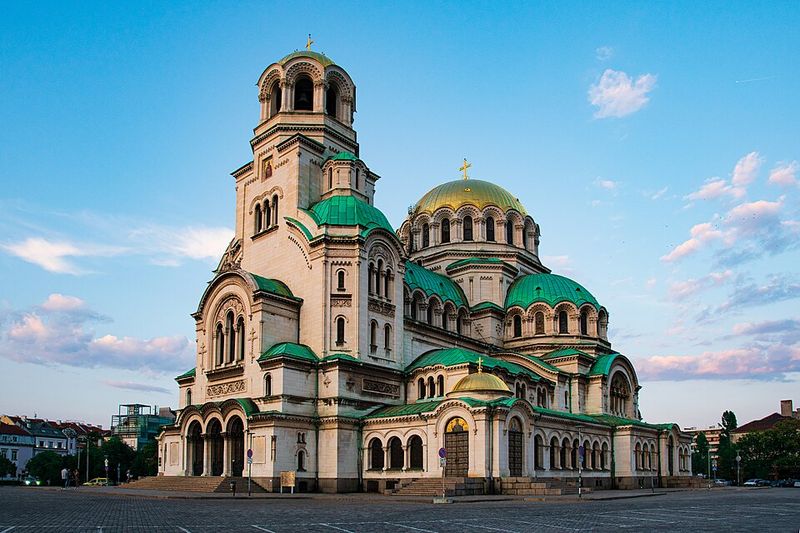
St. Alexander Nevsky Cathedral, a Neo-Byzantine gem in Sofia, Bulgaria, stands as a symbol of Orthodox faith. Completed in 1912, its gilded domes gleam magnificently.
The cathedral’s intricate mosaics and frescoes adorn the interior, offering a spiritual haven. In winter, snow-covered trees enhance its majestic presence.
Photographers and worshippers alike are drawn to its architectural beauty, making it a cornerstone of Bulgarian cultural heritage.
Pena Palace, Portugal
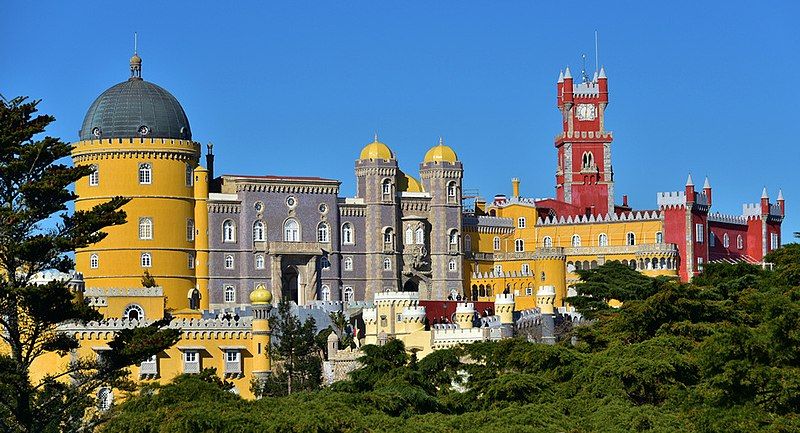
With its vibrant colors and eclectic architecture, Pena Palace stands out as an iconic symbol of Portugal. Nestled atop the Sintra hills, this UNESCO World Heritage site is a fusion of Romanticism and Manueline styles.
Built in the mid-19th century, the palace’s whimsical turrets and breathtaking views attract visitors from around the globe. The surrounding park offers lush gardens and hidden pathways.
Its striking appearance and historical significance make Pena Palace a beloved subject for photographers, capturing the enchanting essence of Sintra.
Bruges Canal, Belgium
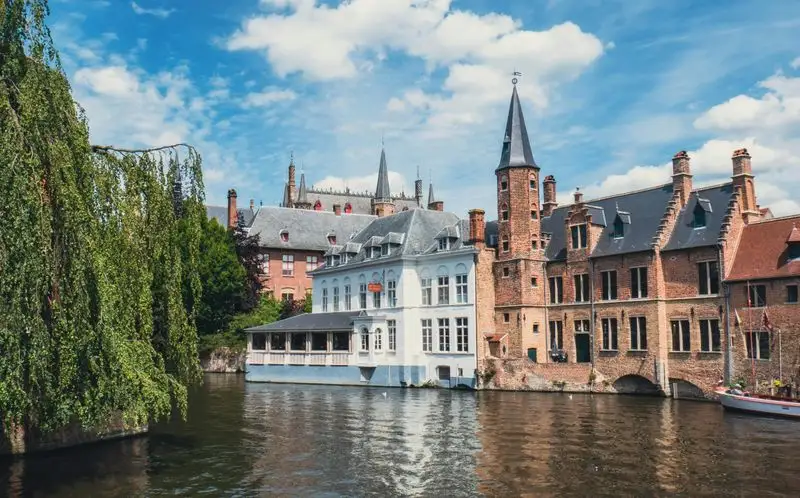
The canals of Bruges wind through the medieval heart of this charming Belgian city. Often called the ‘Venice of the North,’ Bruges’ waterways are a serene escape.
Historic buildings and cobblestone streets line the canals, offering picturesque views at every turn. The swans gliding on the water add to the tranquility.
Photographers are drawn to Bruges for its enchanting beauty, capturing the timeless charm and peaceful ambiance of this fairy-tale setting.
Prince’s Palace, Monaco

The Prince’s Palace of Monaco is more than a residence; it’s a symbol of the principality’s opulence and history. Perched on the Rock of Monaco, it offers sweeping views of the Mediterranean.
Built in 1191, the palace has been home to the Grimaldi family for centuries. Its stunning architecture and ornate rooms are a photographer’s dream, blending Renaissance elegance with modern luxury.
The changing of the guard adds a ceremonial touch, drawing visitors eager to snap the perfect shot. Each corner of the palace tells a story of Monaco’s regal past.
Kotor Old Town, Montenegro
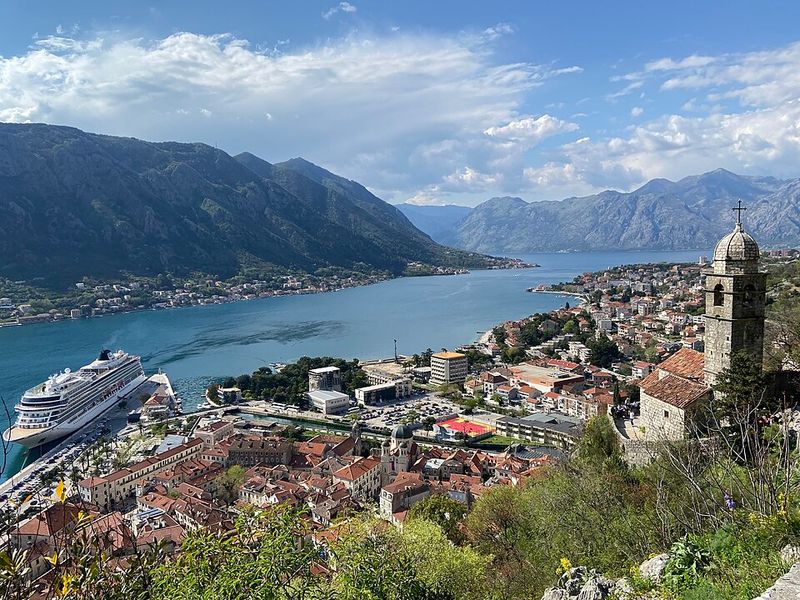
Nestled at the foot of towering mountains, Kotor Old Town is a maze of medieval streets and captivating history. Its well-preserved ancient walls and stunning architecture make it a must-visit.
The town’s charm lies in its blend of Venetian influence and Balkan culture. Narrow alleys, lively squares, and historical churches offer endless photographic opportunities.
Kotor Bay’s natural beauty frames the town, creating a picturesque backdrop. Every corner reveals a new angle, waiting to be captured. It’s a photographer’s paradise, where history and nature coexist.
Keukenhof Gardens, Netherlands
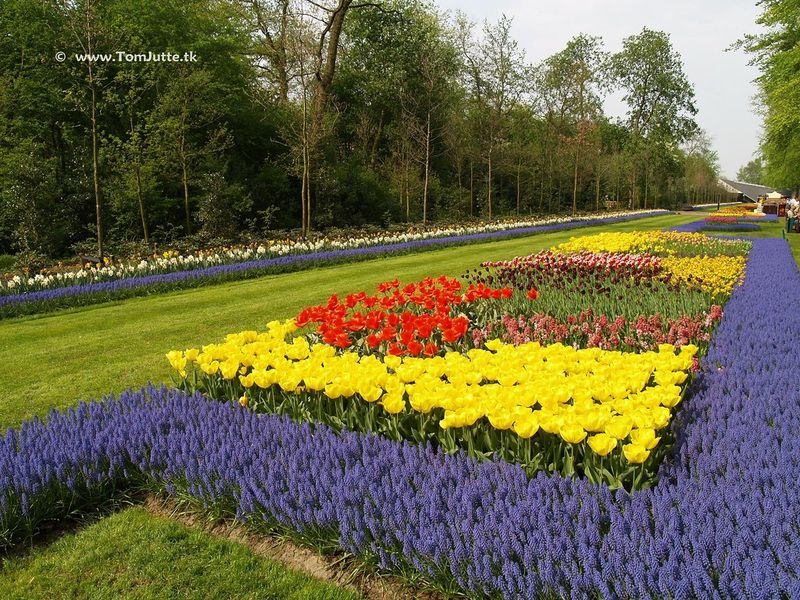
Keukenhof Gardens, known as the ‘Garden of Europe,’ is a floral spectacle like no other. Located in Lisse, it showcases millions of blooming flowers each spring, drawing visitors worldwide.
The riot of colors from tulips, daffodils, and hyacinths creates a mesmerizing pattern, perfect for photography. Windmills and quaint ponds add to the garden’s charm.
This botanical paradise not only celebrates Dutch horticulture but also offers photographers a chance to capture nature’s palette. Each bloom tells a story in this beautifully curated landscape.
Ohrid Lake, North Macedonia
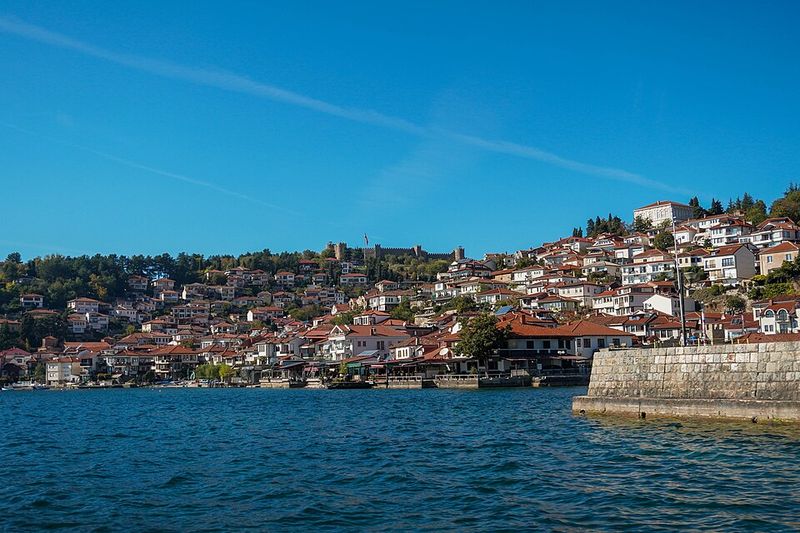
Lake Ohrid is a shimmering jewel shared by North Macedonia and Albania, known for its pristine waters and ancient heritage. As one of Europe’s deepest and oldest lakes, it offers a serene escape.
The lake’s shores are dotted with historic monasteries and charming villages, making it a popular spot for photographers. The tranquil waters reflect the vibrant sunsets, creating a perfect shot.
Its unique blend of natural beauty and cultural landmarks invites exploration. Every visit to Lake Ohrid reveals new wonders, captured beautifully through the lens.
Geirangerfjord, Norway
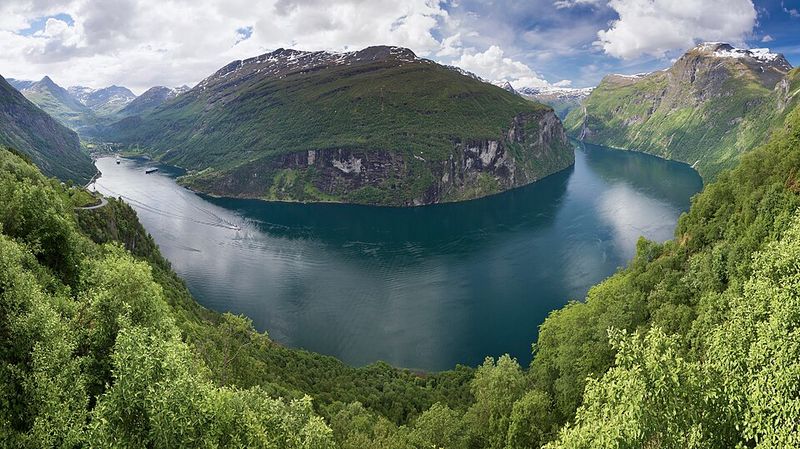
Geirangerfjord is a UNESCO World Heritage site, famed for its breathtaking beauty in the heart of Norway. Its steep cliffs and cascading waterfalls create a dramatic landscape.
The fjord’s serene waters reflect the surrounding green valleys, offering photographers endless opportunities to capture its majestic allure. Cruise ships navigating the fjord add a touch of human presence to the wild scenery.
Each visit promises a new perspective, from the rugged peaks to the tranquil shores. Geirangerfjord stands as a testament to nature’s grand design, captivating all who visit.
Guaita Tower, San Marino
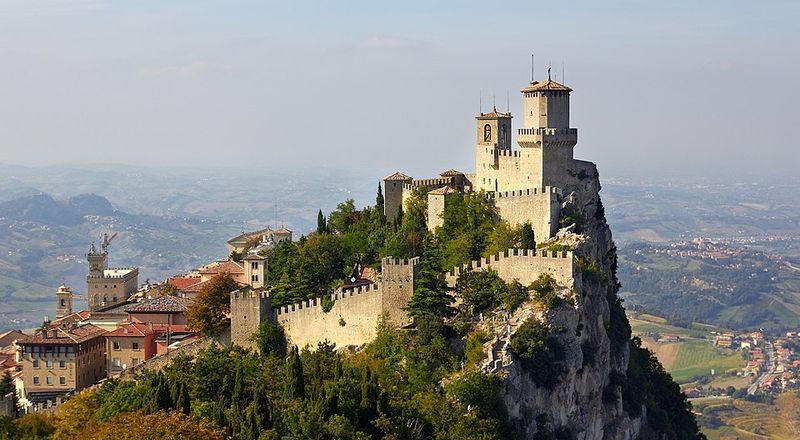
Guaita Tower, the oldest of San Marino’s three towers, stands as a proud symbol of the world’s oldest republic. Perched on Monte Titano, it offers sweeping views of the Italian countryside.
This medieval fortress captivates with its robust architecture and historical significance. Photographers find inspiration in its commanding presence and the breathtaking vistas it offers.
The tower’s walls echo stories of defense and resilience, inviting exploration and admiration. Its timeless beauty continues to draw those eager to capture its essence through the lens.
Stockholm Archipelago, Sweden
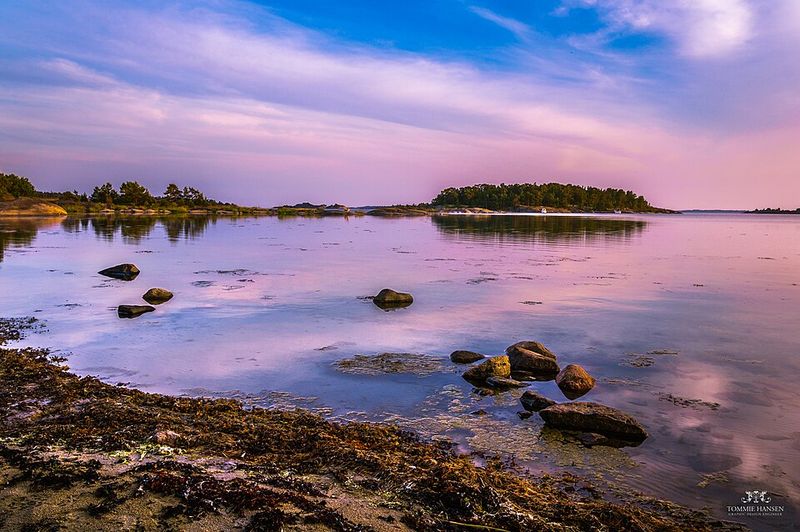
The Stockholm Archipelago is a sprawling network of over 30,000 islands, each offering unique beauty. This natural wonder invites exploration and admiration.
Sailboats glide between rocky islets, while colorful cabins dot the shoreline, presenting a picturesque scene. Photographers are drawn to the interplay of water, sky, and land.
Sunsets cast a magical glow over the archipelago, enhancing its allure. Each visit uncovers new sights, capturing the essence of Sweden’s maritime charm. It’s a haven for those with a love for the sea and the lens.
Berat Castle, Albania
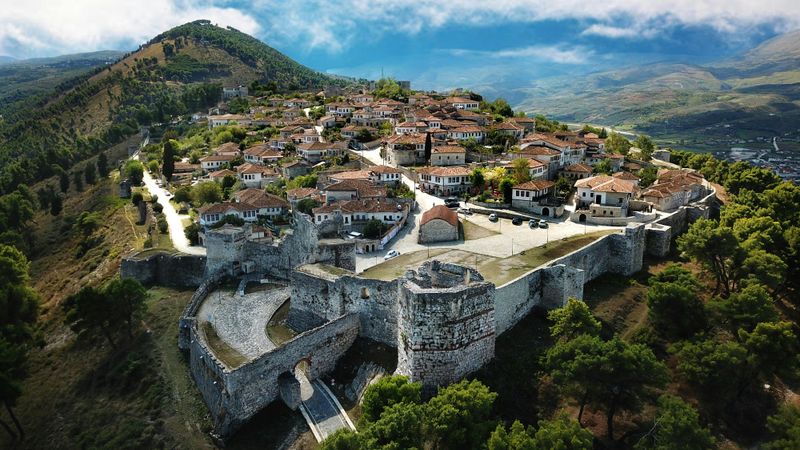
Perched atop the hills of Berat, this ancient fortress whispers tales of Albania’s past. Known as the “City of a Thousand Windows,” Berat Castle offers panoramic views that take your breath away.
Walking through its cobbled streets is like stepping back in time. The blend of Ottoman and Byzantine architecture sets a picturesque scene perfect for photography.
Inside, you’ll find churches and mosques that tell stories of religious harmony. With every corner you turn, the castle reveals another angle of its timeless beauty.
Santuario de Meritxell, Andorra
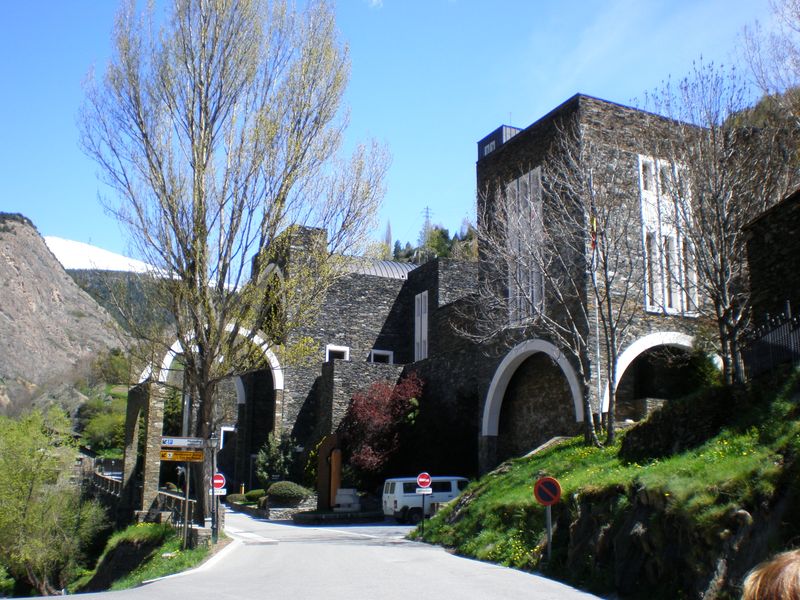
Nestled in the majestic Pyrenees, the Santuario de Meritxell stands as a symbol of Andorra’s spiritual heart. This sanctuary, rebuilt after a fire, merges modern aesthetics with historical reverence.
Its unique design attracts photographers eager to capture its elegant lines and tranquil ambiance. The chapel’s interior is adorned with beautiful sculptures and stained glass.
The surrounding landscape enhances its serene aura, making it a cherished spot for reflection and photography alike. Every image taken here tells a story of resilience and faith.
Geghard Monastery, Armenia
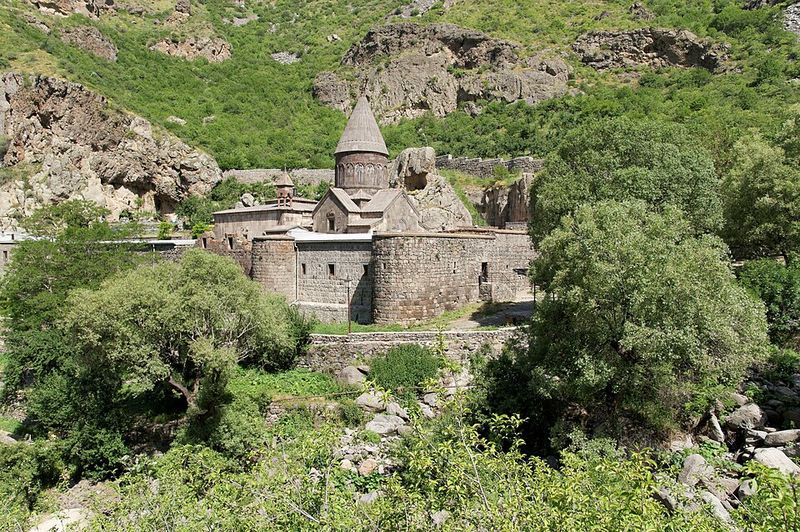
Carved into the cliffs of the Azat Valley, Geghard Monastery is a masterpiece of medieval Armenian architecture. Its ancient stones speak of a history deeply intertwined with spirituality and artistry.
The monastery’s exquisite carvings and the serene sound of flowing water create an atmosphere that draws photographers from around the globe.
Surrounded by rugged mountains, this UNESCO World Heritage site offers a perfect blend of nature and history. Each snapshot captures the essence of Armenia’s rich cultural tapestry.
Stari Most, Bosnia and Herzegovina
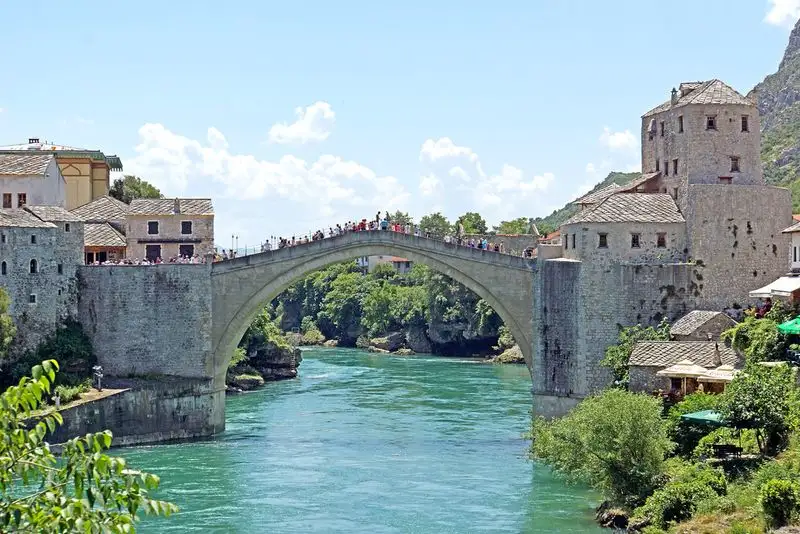
Stari Most, the “Old Bridge,” gracefully arches over the Neretva River, linking Mostar’s old town. This UNESCO site symbolizes unity and resilience in Bosnia and Herzegovina.
Rebuilt after wartime destruction, the bridge draws photographers who capture its blend of history and hope. Its reflection in the water is especially captivating.
Surrounding streets bustle with life, offering vibrant scenes that enrich every photo. Stari Most isn’t just a bridge—it’s a story of endurance.
Suomenlinna Fortress, Finland
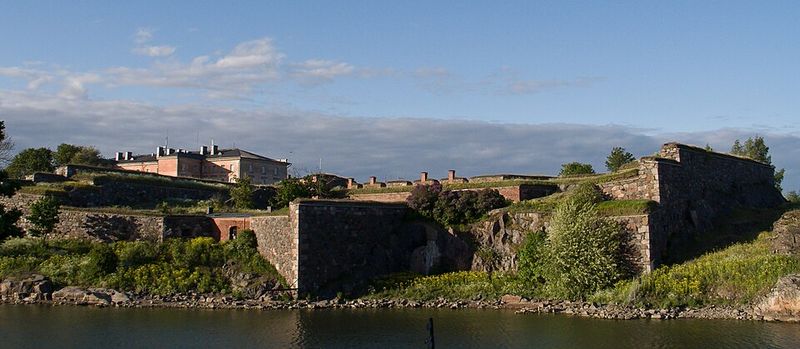
Nestled amidst the serene Baltic archipelago, Suomenlinna Fortress stands as Finland’s most photographed landmark. This sea fortress, built across six islands, offers a picturesque blend of history and natural beauty.
Constructed in the 18th century, Suomenlinna is a UNESCO World Heritage site. Its cobblestone paths and expansive green spaces attract countless visitors throughout the year.
The fortress provides panoramic views of Helsinki, making it a favorite spot for photographers. Its various museums and cultural events add layers of intrigue to any visit. Truly, Suomenlinna captures Finland’s spirit through its enduring elegance.
Cliffs of Moher, Ireland
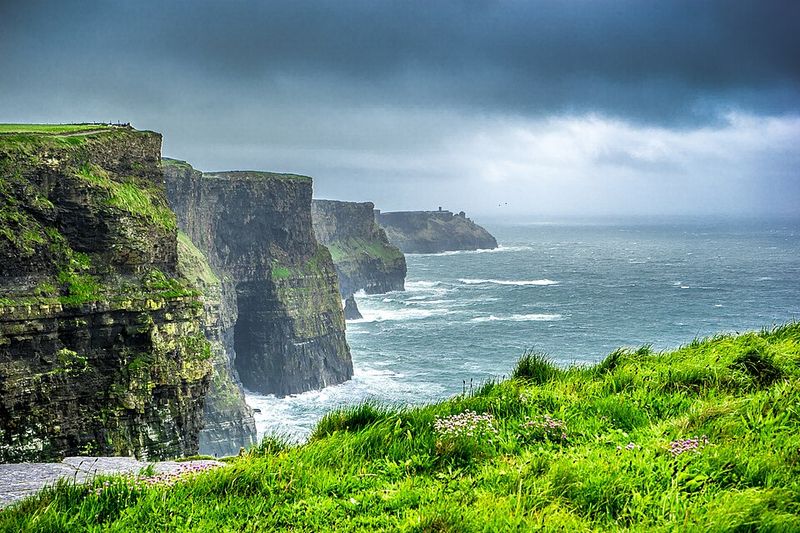
The Cliffs of Moher stand boldly against the Atlantic, drawing millions of admirers to Ireland’s rugged west coast. These cliffs, rising over 700 feet, are a testament to nature’s awe-inspiring power.
With their jagged edges and breathtaking views, the cliffs are a photographer’s paradise. They stretch for about 14 kilometers, offering diverse vantage points.
Rich in biodiversity, the cliffs are also home to various bird species. Whether bathed in sunlight or shrouded in mist, the Cliffs of Moher consistently enchant and inspire, embodying Ireland’s untamed beauty.
Gračanica Monastery, Kosovo
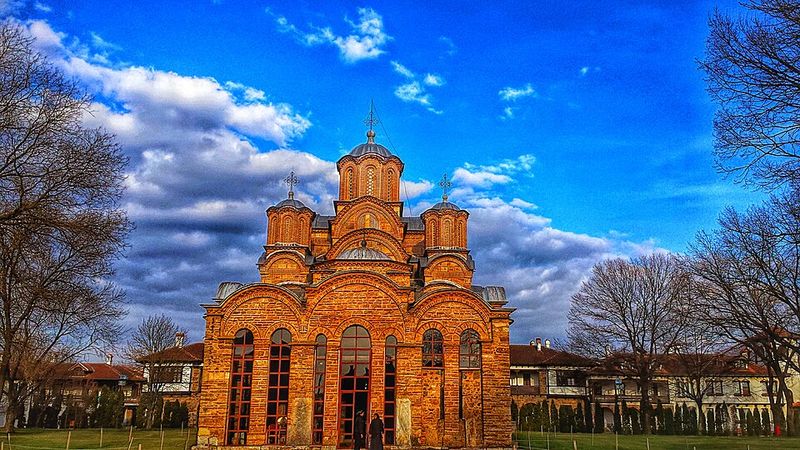
Gračanica Monastery, a testament to Kosovo’s rich history, stands as a beacon of Byzantine architecture. Built in the early 14th century, it showcases exquisite frescoes that captivate art enthusiasts worldwide.
Situated near Pristina, the monastery is a UNESCO World Heritage site, preserving its religious and cultural significance. Surrounded by tranquil gardens, it provides a serene escape for visitors.
The monastery’s intricate design and vibrant artwork make it a prime subject for photographers. It remains a poignant reminder of Kosovo’s historical and artistic heritage, drawing admiration from all who visit.
Riga Old Town, Latvia
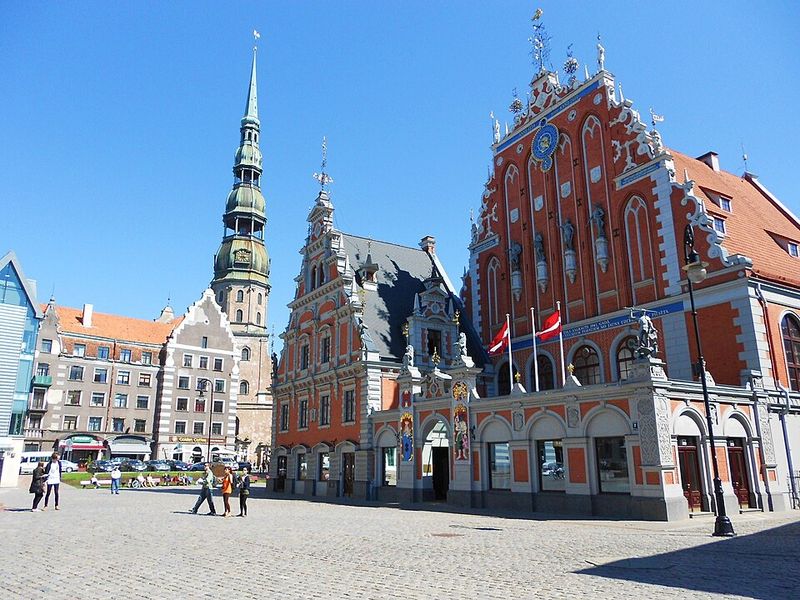
Riga Old Town, a jewel of Latvia, enchants visitors with its medieval charm and vibrant atmosphere. Its narrow, cobbled streets wind through a tapestry of colorful buildings and historic sites.
Home to the iconic House of the Blackheads and St. Peter’s Church, Riga’s old quarter is a blend of Gothic spires and Art Nouveau facades. Its lively squares host markets and festivals throughout the year.
Photographers are drawn to its unique blend of architecture and culture. With each corner turned, Riga Old Town unveils new stories, making it a beloved European destination.
Vaduz Castle, Liechtenstein
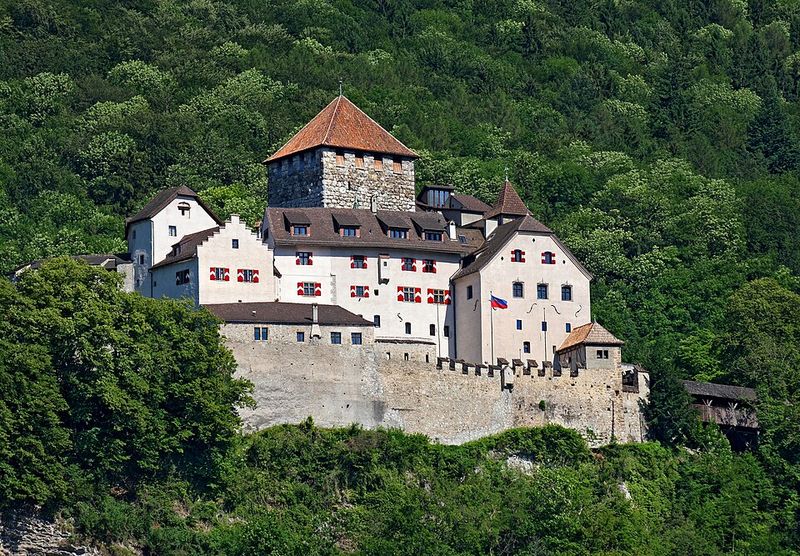
Vaduz Castle, the symbolic heart of Liechtenstein, majestically overlooks the capital from its hilltop perch. Dating back to the 12th century, it serves as the residence of the princely family.
While the interior is not open to the public, the castle’s exterior and its scenic surroundings offer a captivating sight. Its strategic location provides sweeping views of the Rhine Valley.
Each year, the National Day festivities invite locals and tourists to the castle grounds. Vaduz Castle, with its historical allure and royal connection, is a key photographic subject in Liechtenstein.
Vianden Castle, Luxembourg
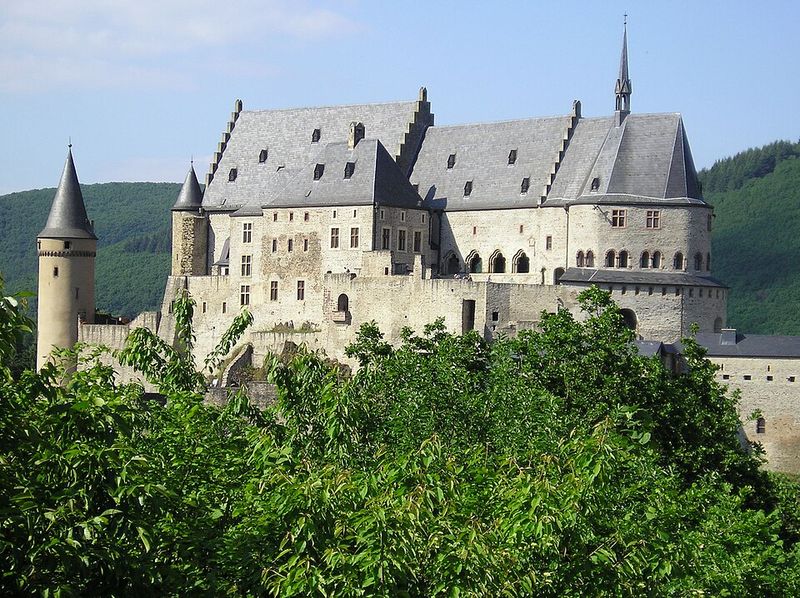
Vianden Castle, steeped in history, stands proudly in Luxembourg, captivating visitors with its medieval grandeur. Originally built between the 11th and 14th centuries, it showcases Romanesque, Gothic, and Renaissance styles.
Perched above the quaint town of Vianden, the castle offers panoramic views of the surrounding landscapes. Its well-preserved halls and exhibitions attract history buffs and photographers alike.
The annual medieval festival brings the castle to life with reenactments and crafts. Vianden Castle remains a striking testament to Luxembourg’s architectural heritage, inviting exploration and admiration.
Mdina, Malta
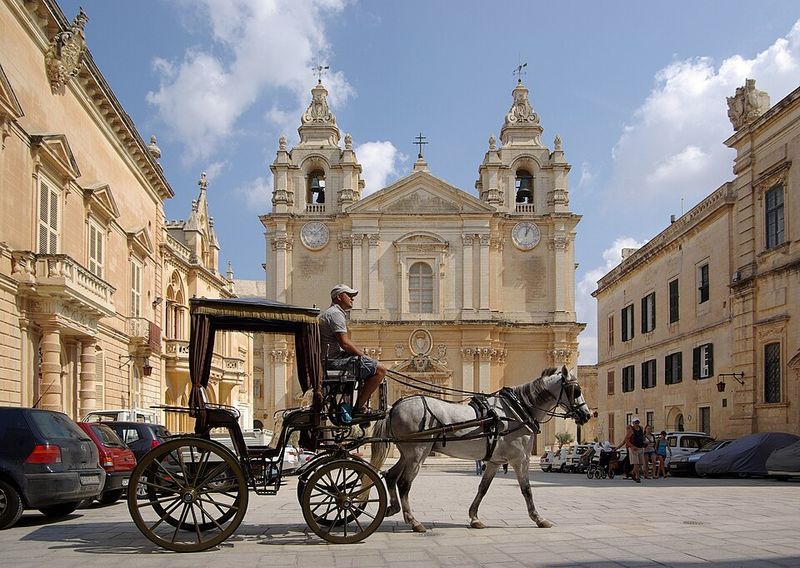
Mdina, the Silent City of Malta, exudes an aura of timelessness with its ancient stone walls and serene atmosphere. Once the island’s capital, this walled city is a fusion of Baroque and medieval architecture.
Visitors can wander its narrow, winding streets, discovering charming squares and historic palaces. Mdina’s elevated position offers stunning views of Malta’s countryside.
The city’s peaceful ambiance contrasts with its bustling past. Photographers find endless inspiration in its architectural details and golden-hued buildings. Mdina remains a cherished gem, capturing the essence of Malta’s rich history.

